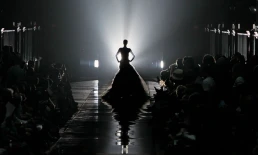Fashion trends in 2024 In The World
Fashion trends in 2024 are expected to be influenced by a combination of sustainability, technology, and a return to individual expression. Here are some key trends anticipated for the year:
1. Sustainable Fashion: Eco-friendly materials and practices will continue to be at the forefront, with more brands focusing on transparency, recycling, and upcycling to minimize environmental impact.
2. Tech-Infused Clothing: The integration of technology in fashion, such as smart textiles and wearable tech, will gain traction, offering functionality along with style.
3. Bold Colors and Patterns: A move towards vibrant colors and bold patterns is expected, with designers embracing expression through eclectic combinations and graphic prints.
4. Comfort and Versatility: With the rise of remote work and a shift in lifestyle, comfortable yet stylish clothing will dominate, including relaxed fits, loungewear, and versatile pieces that can be dressed up or down.
5. Nostalgic Aesthetics: Fashion will draw inspiration from past decades, particularly the 90s and early 2000s, reinterpreting vintage styles with a modern twist.
6. Gender Fluidity: The blurring of traditional gender lines in clothing will continue, with unisex collections and androgynous designs becoming more prevalent.
7. Artisanal and Handmade Elements: A focus on craftsmanship and unique details will emerge, with an appreciation for handmade and artisanal pieces that tell a story.
8. Statement Accessories: Accessories will play a crucial role, with oversized bags, bold jewelry, and unique footwear becoming key elements to elevate outfits.
9. Layering Techniques: Creative layering will be popular, allowing for versatility and personal expression, particularly in transitional seasons.
10. Cultural Influences: Fashion will increasingly celebrate diverse cultural influences, integrating traditional elements and motifs into contemporary designs.
These trends reflect a growing desire for authenticity, creativity, and sustainability in fashion, catering to a more conscious consumer base.
History of clothing design
The history of clothing design dates back to prehistoric times when early humans used animal skins and natural materials for protection against the elements. Over the centuries, clothing evolved from basic functional attire to elaborate garments that reflected cultural identity, social status, and artistic expression.
In ancient civilizations, such as Egypt and Mesopotamia, clothing was often made from linen and wool, featuring intricate designs and embellishments. The Greeks introduced the concept of drapery, while the Romans advanced tailoring techniques, leading to more structured garments.
During the Middle Ages, clothing became a symbol of social hierarchy, with the use of luxurious fabrics and detailed embroidery. The Renaissance period saw a revival of classical styles and an emphasis on individualism, leading to more elaborate designs.
The Industrial Revolution in the 18th and 19th centuries transformed clothing production, introducing machinery that allowed for mass production and the rise of ready-to-wear fashion. This democratized fashion, making it accessible to a broader audience.
The 20th century witnessed significant shifts in fashion, influenced by cultural movements, technological advancements, and globalization. Designers like Coco Chanel and Christian Dior revolutionized women’s fashion, while streetwear and casual styles emerged in the latter half of the century.
Today, clothing design continues to evolve, incorporating sustainable practices and innovative materials, while reflecting diverse cultural influences and individual expression. The digital age has also transformed the fashion landscape, with online platforms and social media playing a crucial role in shaping trends and consumer behavior.

